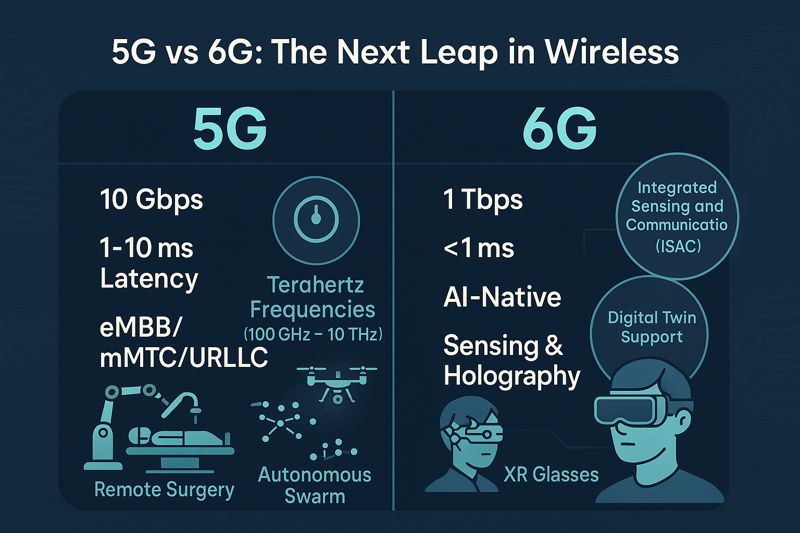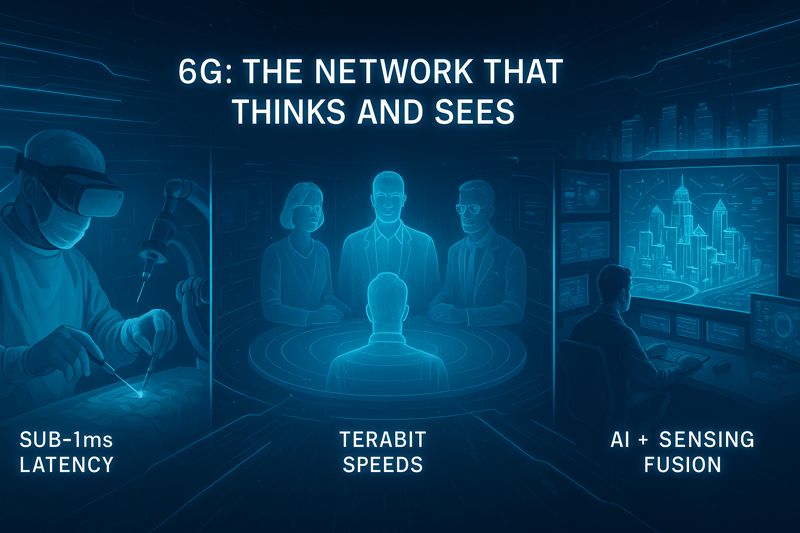Cable & Wire | High quality and excellent service at reasonable prices.
info@zion-communication.com
Author: James Publish Time: 28-08-2025 Origin: Site
The era of wireless technology is near - but will 6G be rolled out soon? Although 5G is still unfolding its coverage, researchers, governments, and tech companies are simultaneously figuring out what will be beyond it. Let's review what we have tentatively established today regarding the 6G network release, 6G internet, and its potential impact on communication.
6G, or sixth-generation wireless, is the planned successor to 5G. It aims to deliver:
Peak data speeds of up to 1 Tbps (terabit per second) — approximately a hundred times faster than the benchmarks of a 5G connection.
Latency below 1 millisecond — one of the direct results will be an instantaneous conversation.
Extremely high reliability suitable for mission-critical applications.
Flawless combination with artificial intelligence, sensing, and holographic communication.
The ITU says that 6G will support use cases like:
Real-time remote surgery.
Swarm of autonomous vehicles.
The XR that brings immersive experience to reality.
The digital twin of cities and industrial systems could be implemented.
These are not just upgrades, but an entirely new revolution in how networks behave with the physical environment.

Currently, 6G does not have an announced launch date, with most experts estimating it for 2030; however, this speculation may change as developments on the global stage progress.
China, the US, South Korea, Japan, and the EU are all engaged in national 6G research programs. As an illustration:
China launched a 6G test satellite in 2020 and aims for early deployment in the 2030s.
The US, which is formulating the Next G Alliance with a target of 2021, will promote the development of 6 G.
Samsung has released a white paper focusing on 2030 as a possible timeframe for the launch's commencement. Nokia has done the same.
As you are not seeing any 6G phones or routers in stores today, you can be assured that the foundation is already being laid.
6G will not just be faster internet in its ordinary sense. Therefore, it would be necessary to define what connectivity will be:
The frequency bands that will be used by 6G include 100 GHz and 10 THz, very different from the frequencies used by 5G. This bandwidth paves the way for the following, but there are complexities of:
Very short range of signal
Increased power use
The use of advanced beam forming and reconfigurable intelligent surfaces.
In contrast to 5G, AI will not be integrated into the network as a foundation, but will instead be an integral part of 6G. Networks will anticipate traffic, adjust coverage, and self-repair, saving on expensive repairs and downtime periods.
The 6G technology also utilizes signals as the "eyes" that can "see" the world without the need for radar. Examples of applications of such technology include:
Building indoor positioning accuracy with a centimeter range.
Recognition of people's gestures without front-facing cameras.
Assessment of the health of bridges or building structures.
Thus, this dual-purpose capability will enable the application of Internet of Things technologies in smart cities and industries.

Future infrastructure should be assessed for site readiness, spectrum access, and roadmap readiness, even though ten years remain for full-scale deployment.
Such connectivity is the basis of most industries, e.g., manufacturing, healthcare, and logistics. If your organization also relies on this connectivity, it is wise to start planning for 6G:
Is your fiber backhaul capable of carrying terabit traffic?
Do your edge computing systems have AI capability?
Speak with Nokia, Ericsson, Huawei, and Samsung about the rollout of 6G.
Membership in two consortia, such as the Next G Alliance or the 6G Flagship (Finland), is an excellent step.
If you are near the end of your equipment's life cycle, you could waste money on 5G standalone (SA) that you'll need to replace in the near future.
Ensure you're using modular hardware that can be easily upgraded in the future.
Start using AI technologies in your network management.
Run private 5G networks that have ISAC-like features, which can mimic the behavior of 6 G.
With planning before 2030, you won't miss out on the opportunity to be part of the 6G era. The best course of action is to plan well in advance.
A: Not true, just as 4G today, both 5G and 6G will live normally. The most complex applications will rely on 6G, and the mass-market devices will be supported with 5G.
A: Not yet, so the first 6G smartphone models are forecasted somewhere between 2030 and 2031, around when standardization and chip development are happening.
A: Yes. The primary purpose of 6th-generation networks is to support ubiquitous connectivity. Thus, they require various types of telecommunication networks, including terrestrial, aerial (drone), and non-terrestrial (satellite) networks, especially in areas where establishing traditional networks is challenging.
A: ITU and FCC (the regulatory bodies) will have stringent limits on the level of radiation for their enforcement. The results of the research show that x-rays, etc., show that there are no dangers above the set standards of RF exposure.
A: The initial deployment costs in a decade are likely to be more than $1 trillion for the global community (as stated by ABI Research). However, automation and AI could ultimately cut O&M expenses.
6G conceptualization is not a thought experiment but a design drive in labs and boardrooms around the world. Although the predicted 6G network release date may be between 2030 and 2032, the options you have now will shape the future resolutions on network design, vendor decisions, and technology investments.
The critical factor is not to jump into the unknown but to have frameworks that will allow you to cope with changing demands. The impact of this stays, not through imitating the latest trends, but through staggered planning based on reality.

James is a technical manager and associate at Zion Communication.
Specializes in Optical Fiber communications, FTTH Solutions,
Fiber optic cables, ADSS cable, and ODN networks.
james@zion-communication.com
+86 13777460328
